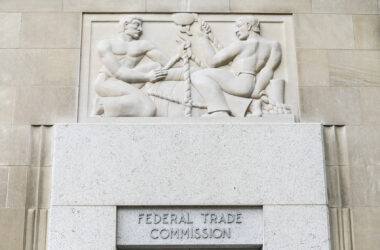States Will Fill the CFPB’s Void
From the June issue of UCD
By Eric L. Johnson and Mark D. Metrey
In the wake of significant changes at the federal level, including reductions in force at the Consumer Financial Protection Bureau (CFPB), budget slashing, and a major shift in supervision and enforcement priorities, it may be tempting for motor vehicle dealers to believe that the regulatory, compliance, and enforcement heat is off. That would be a big mistake.
While it is true that the once and mighty dragon that is the CFPB has faced internal and external political pressure, including leadership turnover, congressional and White House scrutiny, the agency’s recent wounding does not mean that dealers can relax their compliance efforts. The legal architecture of the Dodd-Frank Wall Street Reform and Consumer Protection Act (“Dodd-Frank”) ensures that consumer protection enforcement is a multi-headed hydra—cut off one head, and others remain ready to strike.
In particular, two forces remain fully empowered and increasingly active: state attorneys general and state financial regulators. Coupled with robust state consumer protection laws, these entities now play a more prominent role than ever in enforcing federal and state consumer financial laws. For auto dealers, this means the need to maintain strong compliance programs is just as urgent—if not more so—than it was during the CFPB’s peak enforcement years. Where there once was a mighty and all-powerful dragon, the CFPB, now stands as many as 50 smaller, but no less formidable, state dragons.
When Dodd-Frank was passed in 2010, it created the CFPB to centralize and strengthen consumer protection at the federal level. However, Congress included a provision in Dodd-Frank to ensure that consumer protection would not be derailed by political turnover or federal retrenchment. Specifically, Section 1042 of Dodd-Frank empowers state attorneys general and state regulators to enforce provisions of federal consumer financial law and regulations, including those prohibiting unfair, deceptive, or abusive acts or practices (UDAAPs). This grant of enforcement authority ensured that, even if the CFPB were rendered ineffective or politicized, the state attorneys general and state regulators could still enforce federal consumer financial laws and regulations—even in the absence of federal action.
Additionally, before leaving the CFPB, then-Director Chopra and former CFPB General Counsel Seth Frotman laid out a roadmap for states to assert their enforcement authority. They published an article in the Harvard Law Journal on Legislation on Jan. 15, 2025, titled “State Enforcement as a Federal Legislative Tool.” The article discusses Congress’ visionary empowerment of states to enforce federal consumer financial protections. Their analysis found that all 50 states have collectively participated in about 50 total actions using this authority across the country, regardless of the political party of state officials. The article also emphasizes how these state-led efforts have been successful in ensuring robust protections for consumers, complementing federal enforcement of the federal consumer financial protection laws as well as private enforcement by individual citizens.
Furthermore, just before the change in the Administration, the CFPB issued new recommendations to the states on how states can update their laws and regulations to meet new risks and challenges in a blog post on Jan. 14, 2025: “Strengthening State-Level Consumer Protections” and a 34-page Report and a 363-page “Guidance Compendium of Recent CFPB Guidance” coffee table book, which contains the Bureau’s circulars, bulletins, advisory opinions and interpretive rules to the states (and courts).
Even though new leadership at the CFPB has recently taken steps to withdraw many of its guidance documents, the horse was already out of the barn, and the states may seek to use such guidance to frame their interpretations.
In addition to the authority to enforce federal law, every state maintains its own consumer protection statutes—often modeled on the Federal Trade Commission Act but with broader reach or lower thresholds for proving violations. These state unfair or deceptive acts or practices (UDAP) laws vary, but they generally prohibit false or misleading advertising; deceptive financing practices; bait-and-switch sales tactics; odometer fraud; and failure to disclose material information during a sale.
Some state UDAP laws include private rights of action, meaning consumers can sue dealers directly without relying on regulators. Others permit the award of treble damages, statutory penalties, or attorney’s fees, all of which raise the stakes for non-compliance.
As these are state laws, they do not require any action from the CFPB or the FTC to be enforced. A dealership that skirts compliance requirements could easily find itself facing a state enforcement action or civil lawsuit—even if the federal government has deprioritized supervision or enforcement.
Enforcement is not the only threat: do not forget about plaintiff’s attorneys who are also likely to “pick up the slack” perceived by any lack of enforcement at the federal level.
Dealers cannot afford to treat compliance as something that may change depending on who is in the White House or in charge at the CFPB or FTC. The core elements of compliance—truthful advertising, transparent financing terms, equal access to credit, and fair treatment of consumers—are not going away. The states, and likely plaintiff’s attorneys, will pick up any slack in enforcement. Use this time wisely to get your compliance house in order before the states kick it into high gear. Otherwise, you may find yourself battling not just one dragon, but many. And history shows that federal retrenchment rarely lasts—the pendulum always swings back.
Eric L. Johnson
Hudson Cook, LLP
ejohnson@hudco.com
Mark D. Metrey
Hudson Cook, LLP
mmetrey@hudco.com










